Unlock Emotional Well-being: 10 Acupressure Points for Emotional Release Anyone Can Try
Life is not easy. Its ups and downs can be hard to deal with at times, especially the stress and anxiety that come with it. Many of us tend to bury our emotions and feelings in an effort to ignore the pain but find that the emotions can crop up with a greater vengeance later down the line. While some people resort to therapy to relieve some of that emotional stress, it is often not enough for emotional healing. Acupuncture and acupressure have recently become more common alternative treatments for emotional healing. In this article, we’ll take a look at how you can incorporate the acupressure points for emotional release into your life and begin your journey toward healing.
What Are The Emotional Acupressure Points In The Body?
Acupressure helps to restore balance and start you on the process toward emotional healing by relieving your body of tension and pain as a result of emotional distress. It is an excellent treatment to complement psychotherapy because it allows you to think more clearly without the physiological burden. To perform acupressure for emotional health, all you need to do is apply firm direct pressure to the acupressure points for emotional release described below.
Acupoint: LI-4 (Other Names: Large Intestine-4/He Gu/Joining Valley)

LI-4, also known as “he gu” or “junction valley”, is located in the depression between your thumb and index finger. This acupoint is effective at resolving issues as a result of anger. It clears out your system and revitalizes qi with fresh energy.
Acupoint: PC-8 (Other Names: Pericardium-8/Lao Gong/Palace of Toil)
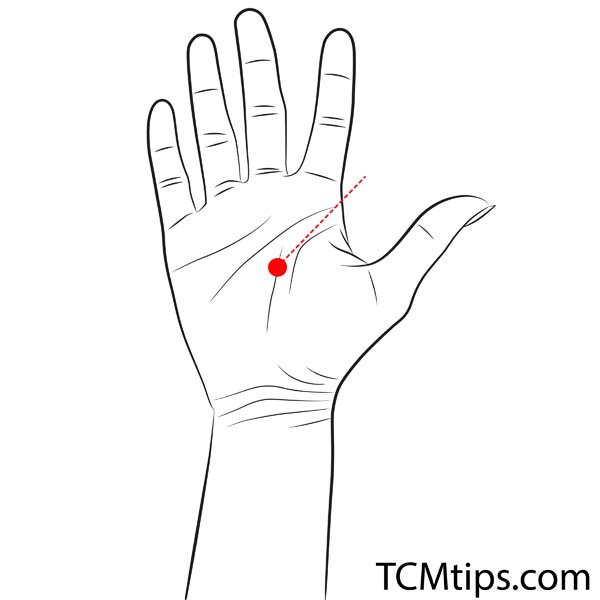
PC-8, also known as “laogong” or “palace of toil”, is located in the center of your palm. You can use it to calm down cardiac pain and clear heart heat as a result of anxiety and stress. In turn, you’ll be able to think more clearly, which is why it is one of the acupressure points for brain fog.
Acupoint: Bl-18 (Other Names: Urinary Bladder-18/Gan Shu/Liver Transporter)

Bl-18, also known as ”ganshu” or “liver transporter”, is located about 1.5 cun lateral to the spine at the ninth thoracic vertebra. One of its main clinical usages is for the relief of emotional issues ranging from depression to irritability because it is the main point used for all liver conditions.

Acupoint: PC-4 (Other Names: Pericardium-4/Xi Men/Xi-Cleft Gate)
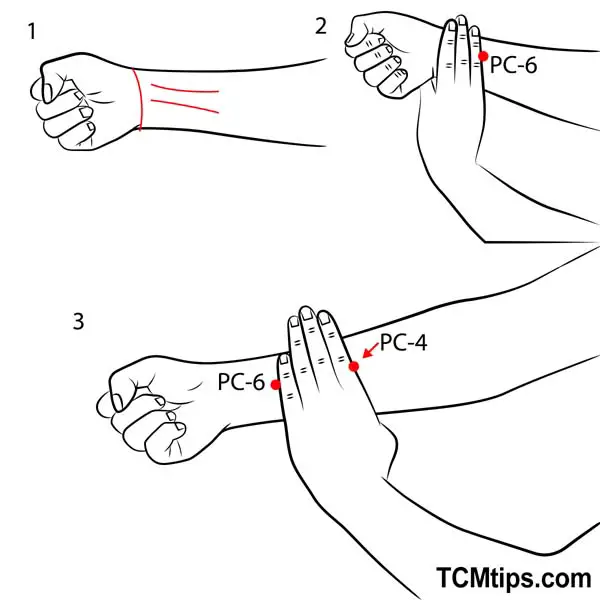
PC-4, also known as “ximen” or “xi-cleft gate, is located about seven fingers above the wrist. This acupoint targets spirit disorders usually due to blood stasis or yin spirit problems, such as depression, social anxiety, and grief.
Acupoint: LI-1 (Other Names: Large Intestine-1/Shang Yang/Metal Yang)
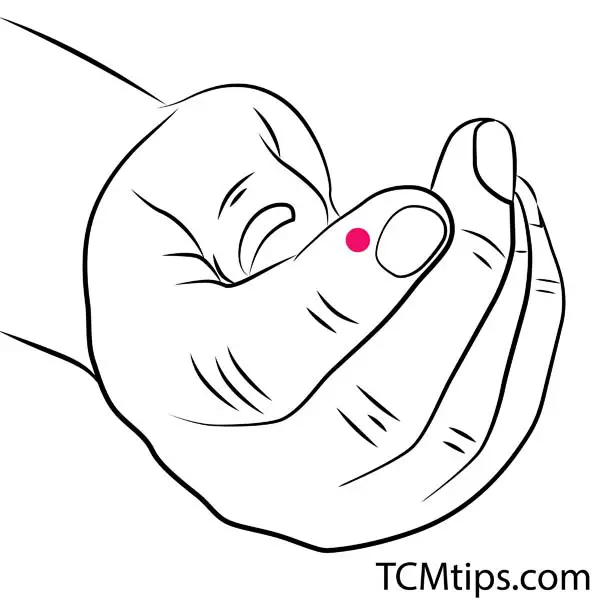
LI-1, also known as “shangyang” or “metal yang”, is located towards the end of your index finger and near the corner of the nail. While the emotional release is not one of its main uses, LI-1 indirectly helps with the consequences of emotional distress, such as eye and ear pain, inflammation, toothache, etc. It is also known as one of the acupressure points for fertility.
Acupoint: LU-11 (Other Names: Lung-11/Shao Shang/Lesser Metal)
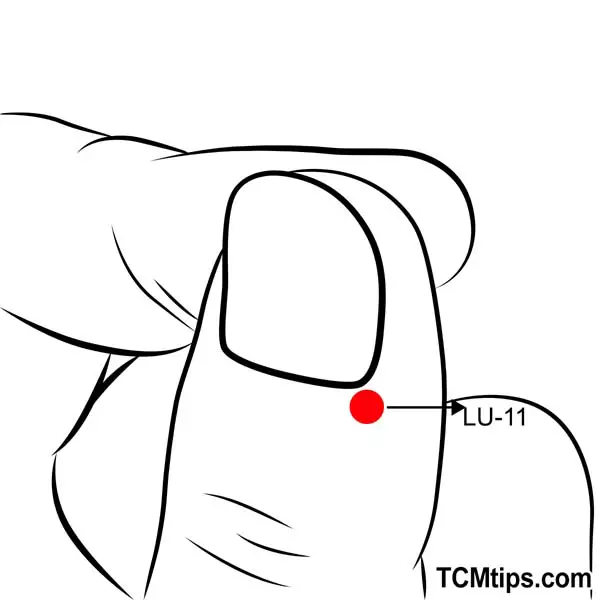
LU-11, also known as “shaoshang” or “lesser metal”, is located at the corner of your thumb’s nail. Like LI-1, LU-11 is not specifically for emotional release, but it plays a role in it by clearing heat and reviving consciousness. It is also known as one of the most effective acupressure points for sore throat.
Acupoint: SI-3 (Other Names: Small Intestine-3/Hou Xi/Back Stream)

SI-3, also known as “houxi” or “back stream”, is located at the end of the fifth metacarpophalangeal joint. It is known to relieve pain in the joints in particular. The bl40 acupuncture point is perfect for those times when your stress and/or anxiety manifest as stiff neck pain.
Acupoint: PC-6 (Other Names: Pericardium-6/Nei Guan/Inner Pass)
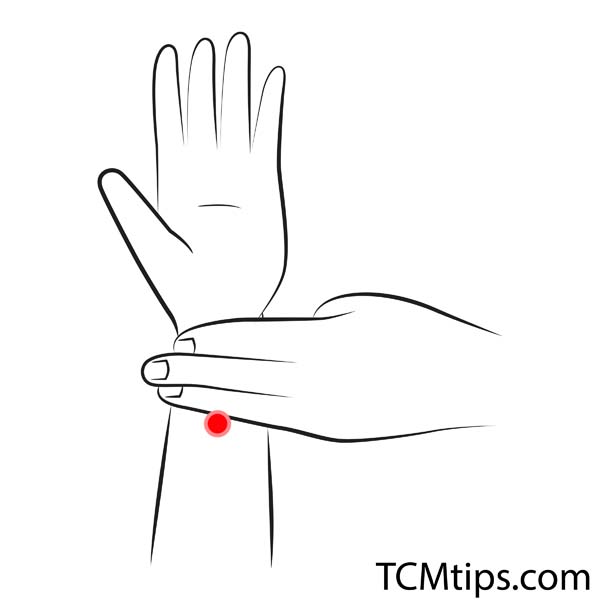
PC-6, also known as “neiguan” or “inner pass”, is located three fingers above the wrist crease. It comes in handy if you are experiencing stress. It calms the Shen and opens and unbinds the chest for emotional healing.
Acupoint: HT-7 (Other Names: Heart-7/Shen Men/Spirit Gate)
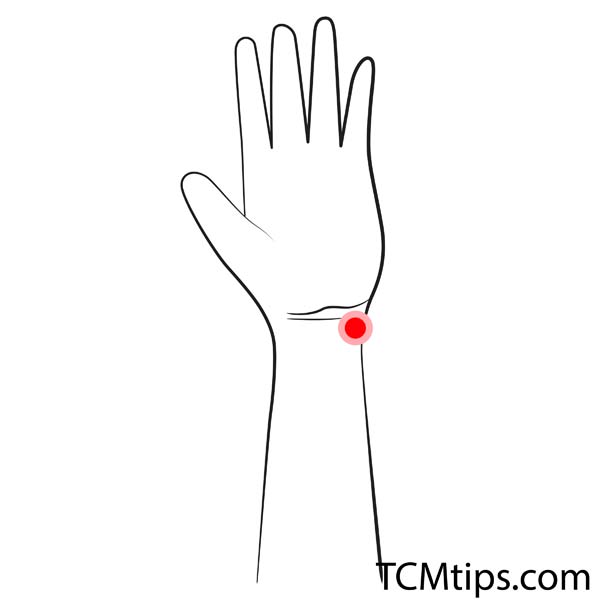
HT-7, also known as “shenmen” or “spirit gate”, is located at the outer corner of your wrist. Out of all of the acupoints that help with emotional release, HT-7 is the main one that is effective for excessive anxiety and worry. It is also known as one of the acupressure points for hot flashes.
Acupoint: SP-6 (Other Names: Spleen-6/San Yin Jiao/Three Yin Intersection)
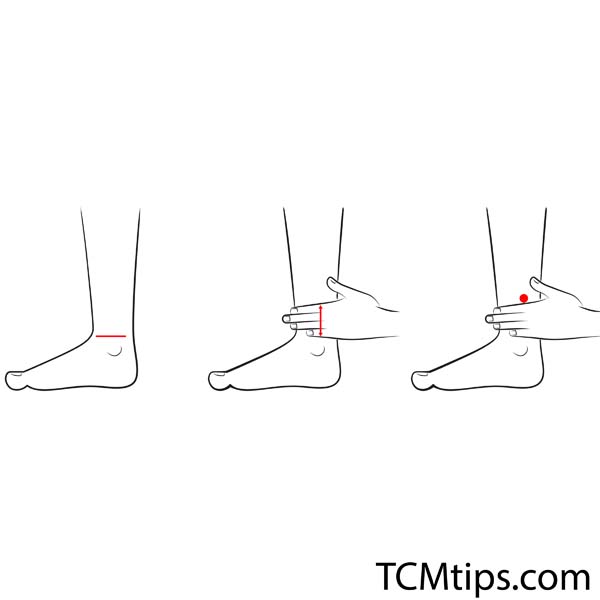
SP-6, also known as “sanyinjiao” or “three yin intersection”, is located about four fingers above the ankle. This acupoint covers a wide range of issues, including menstruation, edema, insomnia, and many more, but is especially important for the treatment of depression.
Can Acupuncture Release Trapped Emotions?

Acupuncture is an ancient method that originated from traditional Chinese medicine (TCM). In this treatment, practitioners insert thin needles into specific points in the body. The practice relies on the concept of qi, or the flow of energy throughout the body. In our natural and healthy state, qi is flowing freely and allows us to move, breathe, think, and feel. It is believed that qi flows through channels called meridians. Every aspect of our health is interconnected in this system. Meridians are responsible for linking various systems and organs together. Blockages of qi occur in these meridians, resulting in disease, pain, and other bodily abnormalities.
Emotional distress can contribute to blockages in qi and can affect more of our health than we realize. Normally, our emotions do not directly impact our bodily processes. In fact, they are a natural response to help us deal with our emotions and feelings. However, it isn’t until our emotions become overwhelming and prolonged that our bodies will respond with an energetic imbalance. Instead of allowing the emotions to pass, we tightly hold onto them and cannot release them from our minds and body. In TCM, different emotions correspond to an organ and meridian. For example, anger is connected to the liver, while fear is connected to the kidneys. Over time, we could experience pain, tension, and disease in these areas as a result. Acupuncture aims to remediate these blockages and heal us by stimulating acupressure points for emotional release.
But you might be wondering if this is worth investing your time in and whether it will work or not. The answer is: maybe. Just like any other conventional medicine treatment, there is no guarantee that acupuncture will work the same for you as another person. However, early research suggests that it is effective at reducing stress. A study from 2007 found that symptoms of posttraumatic stress disorder (PTSD) were significantly reduced after three months. Similarly, another study from 2002 showed that acupuncture lowered mental stress in advanced heart failure patients.
Does Acupressure Work For Depression?

While acupuncture is more commonly known, acupressure has slowly become a more popular form of treatment. It works under the same principles as acupuncture but doesn’t involve needles in treatment. Instead, you are using your hands to massage and apply firm pressure to the acupressure points for emotional release. Acupressure encourages your body to heal itself naturally and relieve muscle tension. What is so much more appealing about this form of treatment is that it can be done by yourself, a close friend or relative, or a professional. It is easy enough that anyone can perform it without posing any risk to one’s health. Because it is less effort and can be just as effective as acupuncture, acupressure is an incredibly powerful tool. Unlike traditional therapies, it directly impacts the areas of the body that are affected by trauma.
As far as acupressure for treatment of depression goes, the research seems to back it up but still has a long way to go. In 2015, researchers from Malaysia concluded that acupressure delivered three times a week for four weeks reduced depression, stress, anxiety, and psychological distress in patients with hemodialysis. Even though these results look promising, it is not recommended that you rely solely on acupuncture or acupressure for emotional health as your main form of treatment for depression and general emotional distress. Please consult your healthcare provider for the best course of treatment for your particular condition.

Try our Anti-Aging Gua Sha Tool designed to bring out your skin’s natural glow.
Best Gua Sha Product- Anti-Aging: The tool is designed to target 11 specific aging signs such as wrinkles and sagging skin. By following the 7-step routine, users can improve skin firmness and reduce fine lines naturally.
- Enhances Skincare Routine: It works effectively with serums and lotions, boosting absorption and efficacy of skincare products.
- Visible Skin Improvement: Users can expect a smoother complexion, reduced puffiness, and a more youthful appearance.
 P. Sze
P. Sze 

















